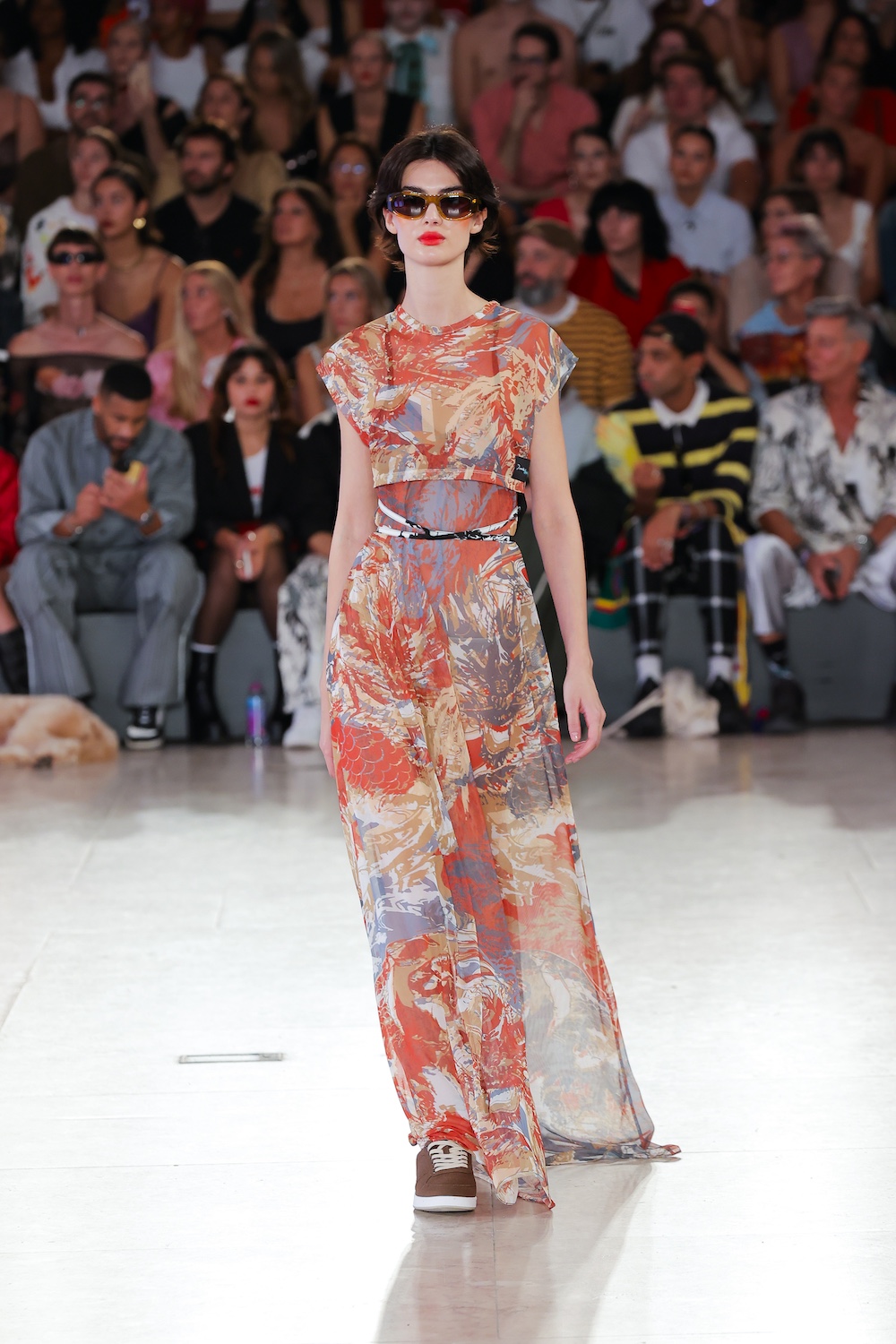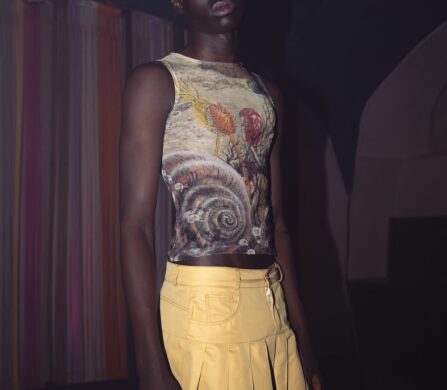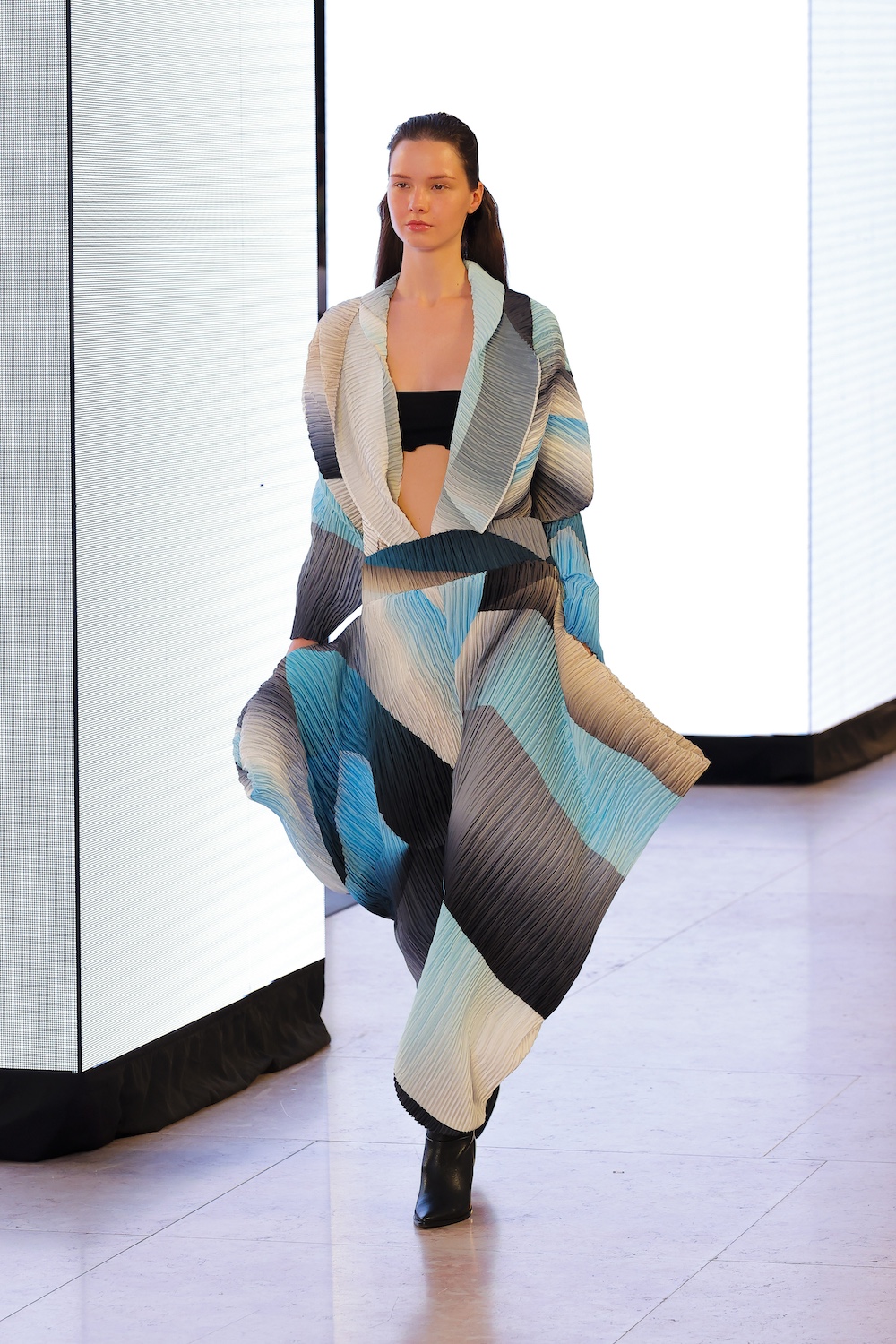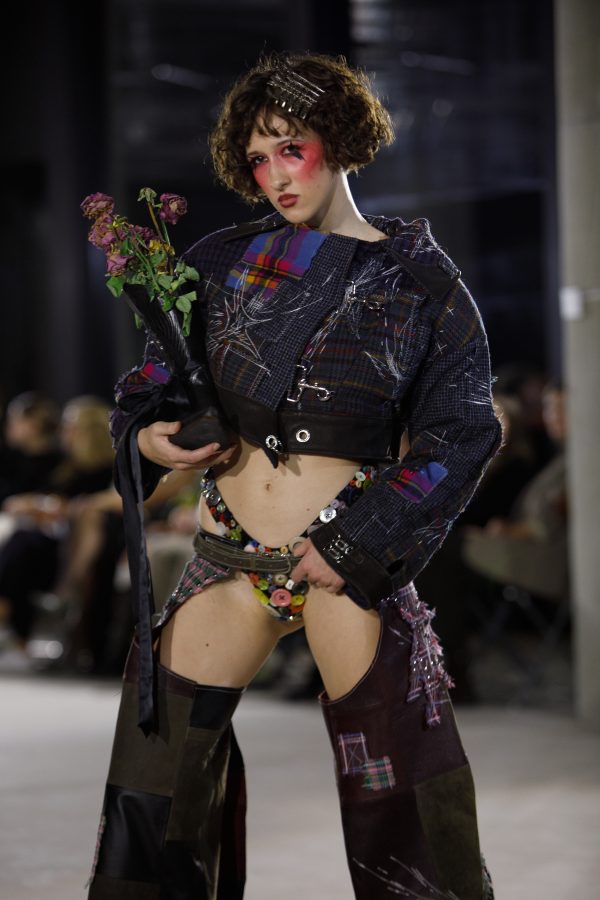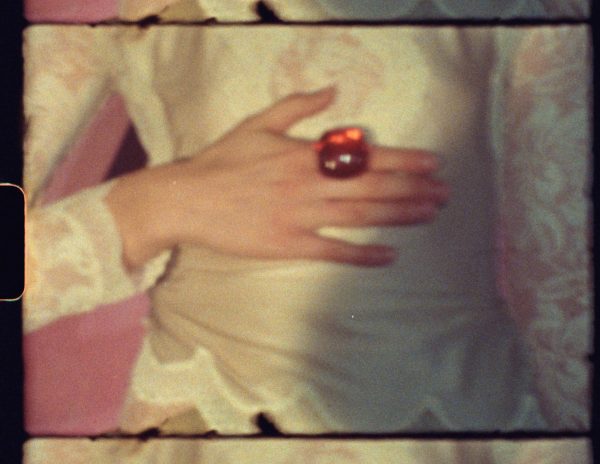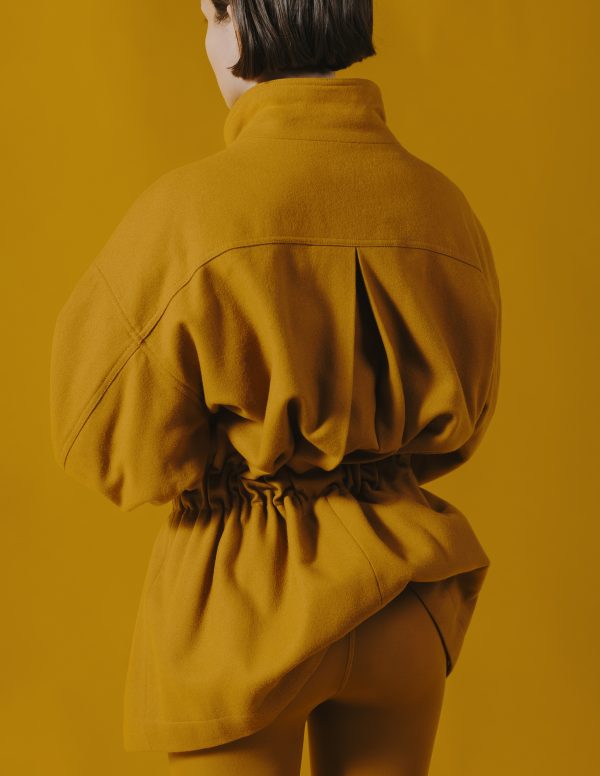
Çal Pfungst
Now in its 63rd season, Lisbon’s fashion week ModaLisboa took place earlier this month, this time with the title ‘SINGULAR’. While there are many ways to interpret this theme, the inspiration was the city itself: a place with a “constant ability to reinvent itself… a city shaped by the ongoing intersection of tradition and innovation… From this intersection springs a singular identity,” says Mayor of Lisbon Carlos Moedas.
The Portuguese designers who show here range from recent graduates to those who have been established for decades, and their offerings from the commercial to the avant garde, with an increasing emphasis on innovation and sustainability. “It’s precisely here, in diversity, that we find that uniqueness that is so complex to describe: managing to consolidate, edition after edition, a fashion week that belongs to everyone,” explains Eduarda Abbondanza, President of Associação ModaLisboa.
Amongst the very varied offerings, this season we noted several designers experimenting with prints. Often imagined and produced specifically for their collections, these prints resulted in a very singular aesthetic not seen elsewhere.

DuarteHajime
You could argue that streetwear label DuarteHajime is all about the prints. In fact, the show for the SS25 collection Mythological began with individual sections of garments being stencilled with spray paints on the catwalk and assembled piece by piece on a model. Designer Ana Duarte is also a professional illustrator and has published five books. She designs all the prints and adapts them for each concept.
This latest concept was based on East Asian mythology and the four guardians or auspicious beasts: the majestic Azure Dragon of the East, the fierce White Tiger of the West, the enigmatic Black Tortoise of the North and the mythical Vermillion Bird of the South. These emblems correspond to the seasons, the elements and to the balance of mankind. Their colours have been reinterpreted in cotton and linen, using three exclusive prints.
Meanwhile, Constança Entrudo called her collection S.O.S. The explanation? “Well-being is like a fleeting shadow slipping through your grasp,” she says. “You chase it but might fall short in capturing it. In the hurried pursuit, you find yourself better off underwater. S.O.S!” The collection started with looks inspired by an “idyllic holiday scene: sandy beaches, crystal-clear waters, a desperate soul,” but soon took a deep dive into a more “fantastical realm”, namely the Cambrian Period, 541 million years ago: apparently the earliest moment where life on earth was possible.
The prints have been crafted from collages of pages from a 1950s issue of LIFE magazine and feature extinct underwater species. Denims look like paper torn from an old book, striped knits and denims mimic poplin or pinstripes, or form dense and unique colour combinations: something of a signature in Entrudo’s designs.
Also taking us seawards, Carlos Gil presented Fantasy, a collection filled with vibrant illustrations of seahorses, penguins, turtles, starfish, flamingos and dolphins, but also dalmatians and cherries, the latter being a tribute to Fundão, where Gil opened his first atelier and still lives and works. The Mozambique-born designer describes the Portuguese region as “known for is spirit of mutual help, hospitality and solidarity”. In addition to the prints, he worked with specialists of Indian origin on the bead and glass embroidery, fusing traditional techniques with contemporary 3D motifs to add a visual depth to each piece.
Like Gil, Lidija Kolovrat was inspired by her adopted home. The Bosnian-born designer reflected on the three decades she has spent living in Portugal and how it’s influenced and shaped her. Whilst perhaps best known for her silhouettes, in this instance large flat shapes and structures inspired by the traditional and melancholic Fado music, the collection also featured surrealistic, distorted prints of Portuguese guitars and colourful garlands of chillis.
Porto-based Luís Buchinho also looked to the past, but a little less far back than Entrudo! His collection recalled the 80s and its “neo-romantic tribes”. Whilst silhouettes referenced the bandanas worn by pop bands of the time, Buchinho avoided the neon brights often associated with the period, opting instead for a predominantly neutral colour palette, accentuated with touches of wasabi green, gold and copper. It was in the prints, which were directly inspired by the graphic design of the time, that these pops of colour really came alive.
And finally, from some of ModaLisboa’s most established designers to one of its newest. Çal Pfungst first caught our attention as a contestant in ModaLisboa’s Sangue Novo (New Blood) competition, which provides opportunities to promising young designers. Pfungst has now graduated to the main schedule, under Workstation, a multi-disciplinary showcase for emerging talent.
Pfungst creates what he calls “carewear clothing” i.e. “clothes that fit me… clothes that tell me it’s worth it to wake up and that I’m not difficult to love… clothes that are friends and lovers”. We are not sure what his collection The Ballad of X is about as his descriptions are more like poems and tend to be somewhat cryptic, but various prints were included, from bright graphic swirls, to softer, overblown florals. In some looks, numerous fabrics seemed intricately patchworked together and in others, pretty, vintage-style patterns were overlaid with bold, black brushstrokes.
If you’re looking for something less run-of-the-mill, something less mass produced, something more singular, then Portugal’s designers and their unique prints are not a bad place to start.
Read more about ModaLisboa here.
words. Huma Humayun
catwalk photography. Ugo Camera/ModaLisboa
constança entrudo photography. Luís Miguel Fonseca/ModaLisboa










